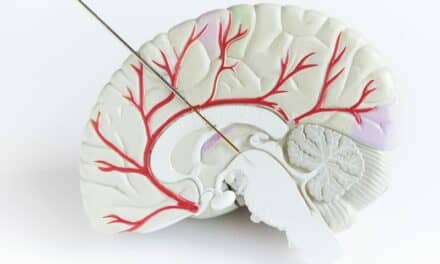By Frank Long, MS, Editorial Director
A harmful microbe with a 97% fatality rate upon infection has been identified in some Florida freshwater bodies. The microbe, an amoeba known as Naegleria fowleri, is remarkably lethal. Only four out of 143 individuals known to have been infected by the amoeba have survived, according to a the Florida Department of Health.
The amoeba enters the human body through the nose then travels to the brain where it destroys brain tissue by causing primary amebic meningoencephalitis (PAM). The disease is rare but usually fatal.
As of July 3 one case had been confirmed in Hillsborough County, Florida, an area populated by several rivers and lakes and where the tourist-rich city of Tampa is county seat.
[ RELATED: Symptoms, prevention, and other important information about PAM from the Florida Department of Health ]
No Test Available
Detecting the presence of N. fowleri in water is difficult since there is no routine and rapid test for the microbe, according to the Centers for Disease Control and Prevention (CDC). The CDC reports that the amoeba is common in freshwater and that swimmers—particularly in Southern states—should assume a low level of risk and take protective measures to prevent water from going up the nose.
Swimmers are not the only at-risk population. Those who use Neti pots as a home treatment for nasal lavage may also become infected by the amoeba. Another at-risk group includes individuals who participate in ritual nasal rinsing and ablution—practices associated with Yogic, Aryruvedic, and Islamic traditions.
Neti Pot Death
In 2018 The Seattle Times reported that one 69-year-old local woman who used a Neti pot to rinse her sinuses with tap water became infected with the amoeba, underwent brain surgery and later died. In that particular case, the woman had been infected by Balamuthia mandrillaris; a slow-moving amoeba that can cause symptoms mistaken for unrelated conditions, thereby delaying a correct diagnosis.
As brain tissues are subjected to increasing destruction from the amoeba an infected person may exhibit confusion, lack of attention to people and surroundings, loss of balance and bodily control, seizures, and hallucinations.
According to Cynthia Maree, MD, an infectious disease physician who co-authored a case study about the Seattle woman’s battle with B. mandrillaris, the woman likely used infected tap water filtered through a store-bought water filter. Once inside the nasal cavity, the brain-eating infection called granulomatous amoebic encephalitis took hold and began its course.
Aquatic Therapy Implications
The possibility that amoebas such as N. fowleri or B. mandrillaris could be present in aquatic therapy facilities is a reasonable concern. The microbe seems to be able to live in tap water and some other types of chemically treated water. According to to ABC News, in 2018 a 29-year-old man who visited an indoor water park in Waco, Texas, is believed to have become infected with N. fowleri at the park and later died.
According to the CDC, infection from swimming pool use is quite rare and, in the case of a properly disinfected swimming pool, infection from N. fowleri is not possible at all.
“You cannot get a Naegleria fowleri infection from a properly cleaned, maintained, and disinfected swimming pool.”
Centers for Disease Control, General Information, Parasites — Naegleria fowleri — Primary Amebic Meningoencephalitis (PAM) — Amebic Encephalitis
The CDC points out that N. fowleri can be present in hot water heaters, pipes, and public drinking water systems. The amoeba does not pose a risk when it is swallowed in drinking water, but the center advises limiting the amount that goes up the nose as an important precaution in lowering the risk of infection.
Early symptoms of N. fowleri infection include headache, fever, nausea, vomiting, and stiff neck. Anyone experiencing these symptoms after swimming should seek professional medical care.
How safe are Neti pots? Read this doctor’s warning in The Seattle Times.





